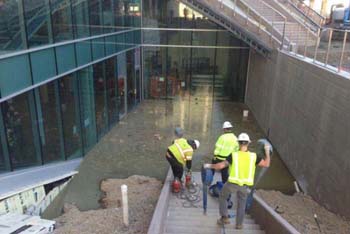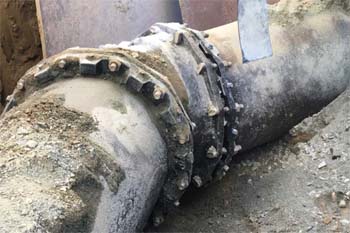A new building project at a major university in Virginia required the replacement of an existing section of 18” diameter underground chilled water supply and return piping. As the new chilled water supply piping was being filled at the completion of the project, one of the pipe joints failed. The resultant leak caused extensive erosion, damage to adjacent piping due to settling, and flooded a nearby medical facility.

According to project documentation, the new chilled water lines had undergone and passed all required pressure testing. The new chilled water piping had also passed all required inspections by project engineers and the Authority Having Jurisdiction (AHJ). Additionally, pre-incident and post-incident photos of the piping system provided no evidence that the failed joint had been improperly installed.
The replacement chilled water piping deviated from the mechanical building plans for various reasons. In anticipation of such deviations, the project specifications included provisions to account for changes. Namely, the specifications called for the installation of air vents at all high points in the underground chilled water piping system. The mechanical building plans also provided piping details for such vents. Review of the as-built plans revealed that there were two high points in each of the underground supply and return lines; however, no vents were installed in the underground lines.

